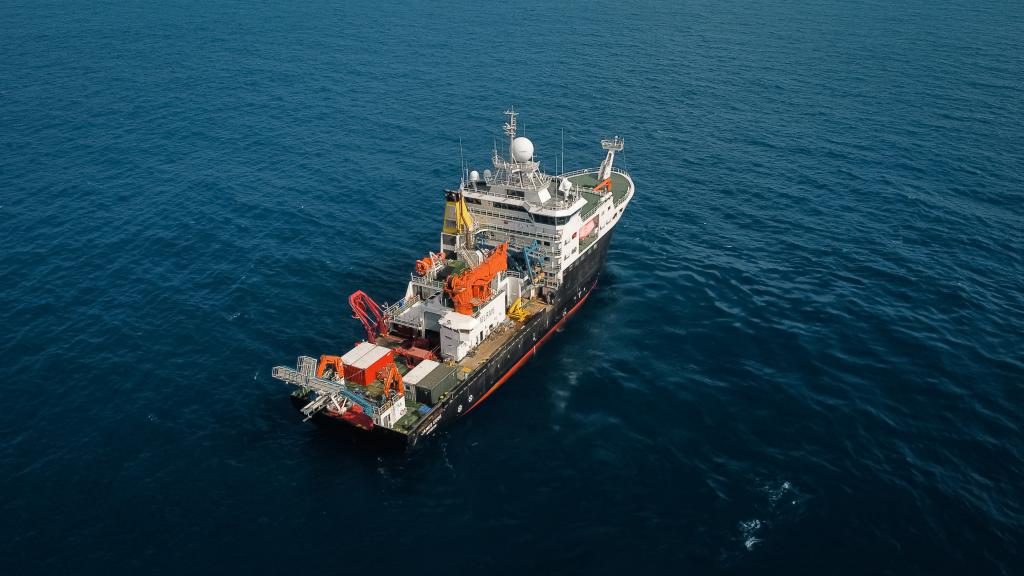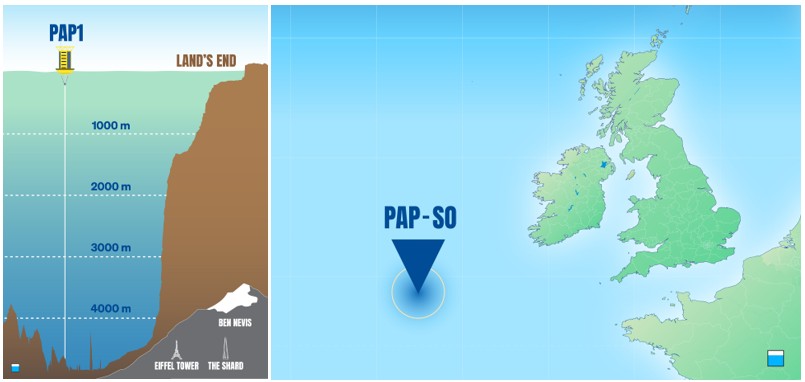It’s an exciting time for ocean science. New, cutting-edge technologies, advances in machine learning and collaboration are bringing us new ways to study the changing life in our ocean.
We’re excited to be adding one of these new tools on this year’s expedition on the Royal Research Ship (RRS) James Cook to the Porcupine Abyssal Plain Sustained Observatory (PAP-SO).
Marking 40 years of continuous research this year, PAP-SO, coordinated by NOC, is among the longest-running deep ocean monitoring efforts globally—offering a unique platform for testing cutting-edge technologies.


The latest is an Imaging FlowCytobot (IFCB), an advanced imaging technology that will, used alongside machine learning techniques, help us unlock new insights into phytoplankton – the organisms that form the basis of the marine food chain and the ocean’s ability to store carbon.
This instrument will be at the centre of an ambitious machine learning-powered project to allow us to capture, process and analyse images of these tiny but mighty organisms in near real-time, as they’re collected at sea.
All science is a journey and this is no exception
It’s funny how science can follow us! The IFCB was originally developed at Woods Hole Oceanographic Institution (WHOI) and I was lucky enough to see an early prototype of it in action during the first summer of my PhD studies there.
In fact, I used IFCBs as of part the Bio-GO-SHIP, which I helped lead and which was recently recognised with the 2024 National Oceanographic Partnership Program (NOPP) Excellence in Partnering Award, a wonderful reflection of the collaboration and innovation at its heart.
Bio-GO-SHIP is a project to integrate biological measurements into the longstanding GO-SHIP (Global Ocean Ship-based Hydrographic Investigations Program), an international effort to systematically measure and understand the physical and chemical state of the global ocean.

GO-SHIP provides high-quality, repeat hydrographic data—like temperature, salinity, oxygen, nutrients and carbon—across key transects of the world's oceans, and researchers at NOC already play a key role in maintaining that part of the program, such as Yvonne Firing and Elaine McDonaugh, supporting ocean physics research.
But until the Bio-GO-SHIP project was started, it didn’t include regular biological measurements.
Why do biological measurements matter?
Without biology, we’re only seeing part of the picture. Adding biological sampling to GO-SHIP helps build a more complete and predictive understanding of the ocean’s role in Earth’s climate system, including the critical role of phytoplankton in that.
Phytoplankton are the base of the marine food chain and a key part of the carbon cycle. They remove CO₂ from the atmosphere and convert it into organic matter, supporting life throughout the ocean. But different groups—such as silica-forming diatoms or calcium carbonate-producing coccolithophores—interact with the climate system in different ways.
So, understanding which types dominate and how they change over time and space, is vital for predicting how the ocean responds to environmental stress.
This is where the IFCB comes in. Every 30 minutes, the instrument images up to 5,000 single cells (phytoplankton being single cell organisms) collected in 5 ml seawater samples.
Because it does this as we travel across the ocean, it means we can create a detailed record of this microscopic life, including cell taxonomy, size, shape and even begin to unravel interactions like grazing or viral infection.

Charting new horizons
The deployment on this year’s PAP-SO expedition is part of an ambitious project to supercharge this capability by integrating the instrument into a broader digital ecosystem, with the aim of serving up plankton images in real time.
This will allow researchers to track changes in community structure and function as they happen—something traditional sampling methods simply can’t match.
Looking ahead, the data collected through this approach will support machine learning models trained to automatically classify different types of plankton.
Over the next two to three years, we’ll gather millions of images from the North Atlantic. The goal is to build robust classification tools that can help us understand not just which species are present, but how they vary in size, abundance and ecological role.

As well as that, I’m continuing work on the Bio-GO-SHIP programme to expand the biological data gathered during GO-SHIP expeditions.
I’m also using the same tools and approaches we’re now adopting for PAP-SO for the TRICUSO Horizon Europe project, which focuses on reducing uncertainty in the Southern Ocean carbon sink. So these types of projects do have a wider global impact, beyond the projects we first test them out on.
New perspectives in ocean science
While the project with the IFCB has taken me full circle, so is another part of this work.
Before I started my PhD, I was studying the arts. So it’s great that we’re involved in a project which will see selected samples collected during the PAP-SO expedition processed using scanning electron microscopy (SEM), the results of which will be used by an artist as part of a collaboration.
It’s a nice full-circle moment. The intersection of science and creativity can help us see the ocean—and the life within it—in new and inspiring ways.
This deployment of the IFCB is a first step, but an important one. With real-time imaging, digital archives, and new tools for automation and analysis, we’re opening a new chapter in how we observe and understand ocean ecosystems.
By Dr Sophie Clayton
Dive deeper
If you would like to learn more about our latest expedition, follow our updates from the ship through our JC278-PAP blog here.
Learn more about this year's PAP-SO expedition here.